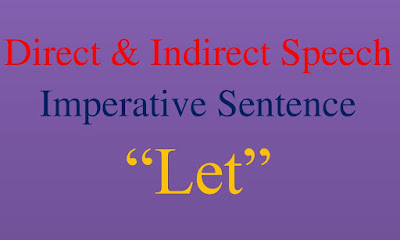Lesson Plan of Noise: It’s Effects & Control General Science Grade IV
Lesson Plan of Noise: It’s Effects & Control
General Science Grade IV
Students’ Learning Outcomes
·
Differentiate between noise
and sounds.
·
Explore the effects of noise
on human health.
·
Suggest ways to reduce noise
pollution and plan an awareness campaign on any one.
Information for Teachers
·
Sources of noise pollution
are road traffic, jet plans, construction machinery and manufacturing machines
etc.
·
Noise pollution affects human
health very badly.
·
Not only hearing ability is affected
but other body systems are also disturbed.
·
Fatigue, headache,
hypertension, angry behavior, disorders in digestive and nervous systems are
caused by prolonged exposure to noise.
Material / Resources
Chair, table, plastic bottle, textbook
Worm up activity
·
Ask the students what kind of
sounds they hear every day. Make a list of different sounds on the board and
then ask the students to different pleasant and unpleasant sounds.
·
Ask a student to dreg a chair
on the floor while ask another student to sing a song.
·
Now ask what kind of sounds
they hear around them. Ask them which sounds are pleasant and which are
unpleasant. Conclude that the sounds which produce pleasant sensation in our
ears are pleasant sounds and unpleasant sounds are noise.
Development
Activity 1
·
Divide the class into groups
and ask the students to discuss in each group: Why do we like to go to quiet
places?
·
After 5 minutes, ask one
student from each group to state the main points of discussion.
·
Write the answers of the
students on the board such as:
v We can sleep well in quiet places.
v We can study
v We can think better
v We can talk with each other
·
Then ask the students to
discuss again in groups: What do we feel in noisy places? You may create a
noisy place by playing a recorded cassette of busy road traffic.
·
After 5 minutes, ask one
student from each group to state important points of discussion.
·
Write the students’ comments
on board such as:
v We can’t study due to noise
v We can’t hear each other well when there is
noise.
v It may cause headache.
v It may damage ears.
v Ask the students groups to comment one by one:
should we avoid noise? How and why?
v Conclude the topic after their comments.
Activity 2
Step 1:
·
Open all the windows and doors of your
classroom.
·
Ask a student to take your chair outside the
classroom.
·
Give him/her an empty plastic bottle and ask
him/her to go outside the classroom and strike it against the chair repeatedly.
·
Ask the whole class, do you hear a low or a high
sound?
Step 2:
·
Then ask the first student to take the chair
further away from the classroom and make a sound with the bottle again.
·
Then ask the class: Do you hear a low or high
sound this time?
 Step 3:
Step 3:
·
Ask the students; close all
the windows and doors of classroom.
·
Ask the first student to
carry the chair inside the classroom again and strike the bottle against the
chair.
·
Then ask the class students,
do you hear a low or high sound now?
(Draw out the conclusion
that: The greater the distance between the source of noise and listener, the
less is the noise. In a closed room the noise increases due to reflections from
the walls, ceiling and floor).
Activity 3
·
Draw the following table on
the board and ask the students to tell about their noise effects and ways to
reduce them and write the correct answers in the boxes.
Noise
|
Its Effects
|
Ways to reduce it
|
Loud TV volume
|
||
Horns
|
||
Loud speaker
|
||
Traffic sounds
|
||
Street hawkers
|
Students’ response:
Noise
|
Its Effects
|
Ways
to reduce it
|
Loud TV volume
|
Disturbing
|
Keep volume low
|
Horns
|
Unpleasant
|
Should be banned except in emergency
|
Loud speaker
|
Hearing problems
|
Should be banned or the use should be
restricted
|
Traffic sounds
|
Mental disorders, fatigue, pains
|
Increasing green area/tree plantation
|
Street hawkers
|
Disturbing
|
Close the door
|
Sum up / Conclusion
·
Ask students: What you have
learned from the lesson? And write their answers on the board.
v The voice which doesn’t feel good to our ears
is a noise.
v Noise may cause a headache.
v We can’t study in noise.
v The noise may damage our ears.
v We can reduce noise.
o By increasing green area/tree plantation around
sources of noise such as factories, motorways, railways and airports.
o Building industrial area, railway stations and
airports away from the towns.
o Avoiding the use of loud speakers.
o Avoiding excessive use of vehicle horns.
·
We can reduce noise pollution
in our community by awareness campaigns for the people.
Assessment
·
What are the sources of noise
pollution?
·
How can we reduce noise
pollution in our city?
·
Explain the effects of noise
on human health?
Follow up
·
Different type of problems do
you face due to the noise when you are in school, at home and on the road?
·
Ask the students to make
posters showing the noise sources and their effects.
·
Launch a campaign in your
locality to make the people aware of noise pollutants, their effects on our
health and the ways to reduce noise pollution.






Comments
Post a Comment